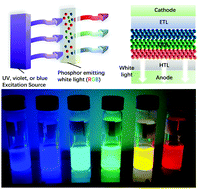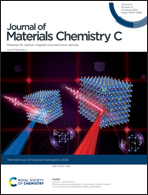Colloidal quantum dot hybrids: an emerging class of materials for ambient lighting
Abstract
The rapid growth of the global economy and urbanization have resulted in major worldwide issues such as greenhouse gas emission, air pollution and the energy crisis. Artificial ambient light is one of the greatest inventions in human history, but it is also one of the primary energy consumption constituents and a focus of the global grand energy challenge. Therefore, low cost and low energy consumption lighting technology is in high demand. In this review, we will summarise and discuss one of the emerging lighting technologies – white electroluminescence light-emitting diodes enabled by hybrid colloidal quantum dots (WQLEDs), which have attracted intense attention because of promising potential in both flat-panel backlighting and solid-state lighting. WQLEDs have unique high luminescence efficiency, broad colour tunability and solution processability. Over the past few decades, the development of colloidal quantum dot synthesis, material engineering and device architecture has highlighted the tremendous improvements in WQLED formation. As WQLED efficiencies approach those of molecular organic LEDs, we identify the critical scientific and technological challenges and provide an outlook for ongoing strategies to overcome these challenges.

- This article is part of the themed collections: Journal of Materials Chemistry C Emerging Investigators and Journal of Materials Chemistry C Lunar New Year collection 2021


 Please wait while we load your content...
Please wait while we load your content...